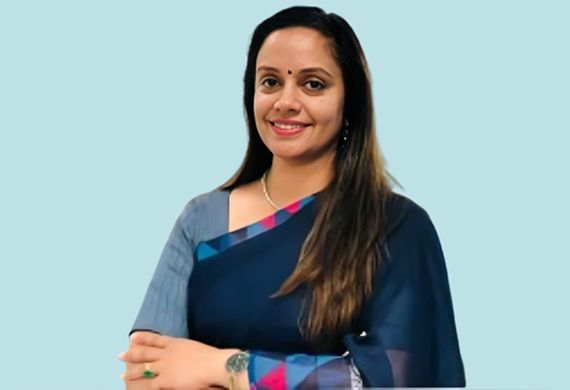
Women-Led Digital Innovation Redefining Insurance Retention
By: Nisha Menon, Senior Vice President, Axis Max Life Insurance Limited
With over 23 years in financial services, Nisha brings deep cross-functional expertise across insurance and banking operations, customer service, and digital transformation. She has led large-scale initiatives in customer engagement, policy renewals, and retention, driving innovation through BOTs, CRMs, digital channels, and multilingual tech-enabled service platforms.
In a thought-provoking interaction with Women Entrepreneurs Review Magazine, Nisha shares her insights on how evolving customer expectations shape retention strategies in a digital-first insurance market, highlighting women leaders’ unique role in driving cross-functional innovation and empowering women to lead tech-enabled loyalty programs and seamless customer journeys.
Given today’s rapidly evolving insurance landscape, how do you perceive the changing customer expectations influencing retention strategies and operations in the current digital-first market?
The insurance sector in India is undergoing rapid transformation, driven by digitization, evolving customer expectations, and regulatory shifts. Today’s customers seek more than products—they expect transparency, personalized engagement, and proactive service. The one-size-fits-all model no longer suffices; hyper-personalized solutions are the norm.
To meet these demands, insurers are building omni-channel ecosystems that blend DIY(Do-It-Yourself) and DIFM (Do-It-For-Me) journeys. Customers should be able to begin a journey online and seamlessly complete it offline, or vice versa. Achieving this requires back-end transformation through intelligent automation like RPA to boost speed, accuracy, and free up human capacity for empathy-led interactions.
At Axis Max Life, advanced analytics plays a vital role in our customer retention strategy. Nearly 65% of our customers receive only a soft, personalized nudge, thanks to our predictive models. These insights also shape our communication strategies, ensuring every interaction aligns with the customer’s unique profile and journey stage.
With cross-functional synergy being critical, how can women leaders uniquely drive innovation in integrating customer journeys across traditional and emerging digital channels in financial services?
Women leaders bring innate strengths—collaboration, empathy, and systems thinking—that are critical to driving cross-functional innovation. They break silos, foster consensus, and ensure solutions remain deeply anchored in customer needs. Their ability to spot interconnections and embed real-time feedback loops helps avoid exclusion in digital-only designs. At Axis Max Life, a senior woman leader recently led an agile transformation involving tech, marketing, compliance, and business teams to reimagine journeys that work seamlessly across digital and branch channels. Such inclusive leadership ensures no customer segment is left behind. However, for women to lead more such transformative initiatives, organizations must invest in capability-building, mentorship, and create an ecosystem that empowers them to take on strategic, cross-functional roles.
How do you envision leveraging advanced analytics and Six Sigma methodologies to redefine customer experience, while balancing empathy and efficiency in operations?
Advanced analytics enables us to scale empathy by identifying and responding to individual customer needs with precision. It allows us to move beyond generic solutions and build personalized experiences. For instance, senior citizens often find onboarding complex; therefore, by combining analytics with Six Sigma tools, we’ve eliminated redundant steps and simplified the process. Our claims process is another great example where analytics helps us rapidly process routine cases while flagging sensitive ones for more compassionate handling. At our call centre, predictive models recommend the ‘next best action’ for each caller, enhancing outcomes and satisfaction. Continuous performance coaching, also analytics-led, further sharpens agent effectiveness. The intersection of data-driven efficiency and human-centric design is where truly differentiated customer experiences are created.
How can women leaders overcome gender bias when leading large-scale transformation projects in traditionally male-dominated financial sectors?
It’s inspiring to see more women leading complex transformation initiatives in financial services. The first step to overcoming bias is to establish credibility early—by setting a clear roadmap, delivering with consistency, and showcasing subject matter expertise. Building strategic allies is equally important—regardless of gender, allies can champion your vision and amplify impact.
One area where women often hesitate is in communicating success. Unlike many male counterparts, we may assume our work will speak for itself. But ‘hope’ isn’t a strategy; women must proactively and assertively communicate progress through all available platforms. Demonstrating early wins, leveraging diverse talent, and bringing inclusive perspectives to the table can fast-track trust. Above all, avoiding self-doubt and second-guessing is key; confidence is as crucial as capability.
In the context of your experience with loyalty programs and tech-enabled service journeys, how can organizations empower women professionals to pioneer such initiatives and scale impact?
I’ve been fortunate to receive strong organizational support in leading high-impact, tech-led initiatives. At Axis Max Life, we have structured platforms to empower women—our peer network WIN (Women in Network) fosters experience sharing and informal support, while our formal mentoring program pairs women with leaders who coach, sponsor, and advocate for them in critical leadership roles.
To truly scale women-led impact, organizations must consciously eliminate bias in the allocation of high-stakes projects. This often starts with equipping colleagues—especially men—with training to recognize and overcome unconscious bias. We've implemented such interventions with great success. Additionally, our flexible work policies ensure women can take on demanding roles without compromising their work-life balance. Empowerment is most effective when it is intentional, structural, and sustained.
What advice or message would you share with aspiring women leaders aiming to create meaningful change in customer-centric industries like insurance?
My message to aspiring women leaders—whether in insurance or any industry—is to continuously invest in building their knowledge and staying attuned to evolving trends. Equip yourself with relevant skills and never hesitate to ask for what you want. If you're 80% ready, raise your hand for high-impact assignments and use the journey to close remaining gaps.
Be vocal about your ambitions, build strong professional networks, and surround yourself with allies who support your growth. Resilience is key—learns to bounce back from setbacks and keep moving forward. Importantly, showcase your work proactively; don’t assume that good work alone will get noticed. Celebrate small wins, share progress, and most importantly, lead by example—while lifting other women along the way.






